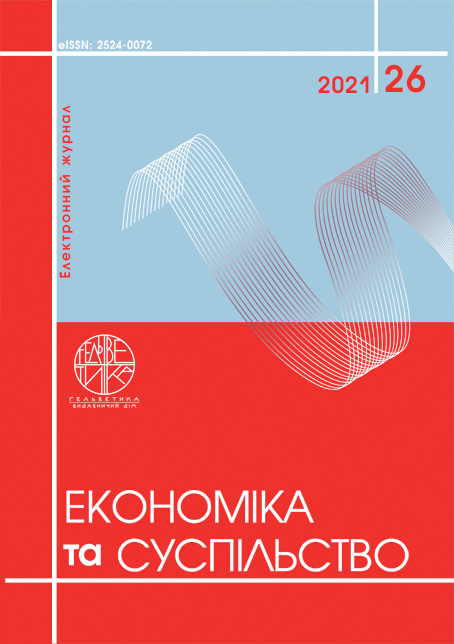MANAGEMENT OF CURRENT ASSETS OF ENTERPRISES AND THEIR TYPES
Abstract
For the rational functioning of an enterprise, it is necessary to effectively manage its circulating assets. The efficiency of current asset management has a major impact on the continuity of the production process and sales of manufactured products, as well as on such financial indicators as liquidity, solvency and financial stability of the enterprise. The article notes that the management of current assets occupies a large part of financial management in the asset management system of an enterprise. the basis of current assets is the production stock of the enterprise. They significantly affect the financial result of economic activity, since they occupy the largest share in the cost of an enterprise in most industries in various fields of activity. It has been established that the most significant part in the structure of current assets of the enterprise is occupied by stocks, which, in turn, include firewood and materials; unfinished virobnitstvo; ready products and goods. As such, a rational way of managing stocks is one of the tasks of managing current assets. The solution to this problem is sufficient to ensure uninterrupted operation of the viral and trading process with minimal costs for the maintenance of supplies. Based on the analysis of literature sources, we developed a general algorithm for managing the company's current assets, which consists of six stages and includes an analysis of the use of working capital in the previous period, determining approaches to the formation of working assets, their optimization, ensuring the necessary liquidity and increasing the profitability of working assets. A practical option for improving the management of circulating assets is proposed on the example of farm stocks. This proposal, namely an increase in the amount of the batch of purchased production stocks, will not only reduce the amount of transport and procurement costs, but will also affect the cost of the batch itself. The experience of enterprises indicates the possibility of using various methods of managing current assets, including production inventories. An improved production inventory management system of an enterprise should carry out its functions in accordance with the basic principles of material support of production using management tools that ensure its flexibility and dynamism.
References
Бiлик М.Д. Управлiння фінансами державних пiдприємcтв. Київ : «Знання», КOO, 1999. 312 c.
Власова Н.О. та ін. Управління оборотними активами в підприємствах роздрібної торгівлі: монографія. Харків : ХДУХТ, 2014. 258 с.
Єпіфанова І. Ю., Джеджула В.В. Фінансовий аналіз та звітність : практикум. Вінниця : ВНТУ, 2017. 143 с.
Застрожніков А. Г., Застрожнікова І.В. Місце і роль фермерських господарств в системі агробізнесу . Збірник наукових праць Таврійського державного агротехнологічного університету (економічні науки). 2010. № 2. С. 106–116.
Перевозова І.В., Янчишин А.С., Шишковський С.В. Достовірність інформації про необоротні активи, які утримуються для продажу, у контексті детінізації господарської діяльності підприємств України. Актуальні проблеми розвитку економіки регіону. 2011. Вип. 7(2). С. 109–113.
Крамаренко В. І., Холод Б. І. та ін. Управління ресурсами підприємства: навч. посібник. Київ : Центр навчальної літератури, 2017. 288 с.
Кодацький В. П. Шляхи ефективного управління оборотними активами промислових підприємств. Актуальні проблеми економіки. 2010. № 4. С. 271–274.
Павлова Г.Є., Приходько І.П., Тютюнник Я.В. Облікове забезпечення операцій з надходження та використання оборотних активів. Науковий вісник Ужгородського національного університету. 2018. Вип. 20 (2). С. 147–150.
Bilyk, M.D. (1999). Upravlinnia financamy derzhavnykh pidpryiemctv [Financial management of state enterprises]. Kyiv: Znannia. (in Ukrainian)
Vlasova, N.O. & other (2014). Upravlinnia oborotnymy aktyvamy v pidpryiemstvakh rozdribnoi torhivli [Management of current assets in retail enterprises]. Kharkiv: KhDUKhT. (in Ukrainian)
Yepifanova, I.Yu. & Dzhedzhula, V.V. (2017). Finansovyj analiz ta zvitnist': praktykum [Financial analysis and reporting: a workshop]. Vinnytsia: VNTU. (in Ukrainian)
Zastrozhnikov, A.H. & Zastrozhnikova, I.V. (2010). Mistse i rol' fermers'kykh hospodarstv v systemi ahrobiznesu [Theplace and role of farms in the agribusiness system]. Zbirnyk naukovykh prats' Tavrijs'koho derzhavnoho ahrotekhnolohichnoho universytetu (ekonomichni nauky) – Collection of scientific works of the Tavriya State Agrotechnological University (economic sciences), 2, 106–116. (in Ukrainian)
Perevozova, I.V. &Yanchyshyn, A.S. &Shyshkovs'kyj, S.V. (2011). Dostovirnist' informatsii pro neoborotniaktyvy, iakiutrymuiut'siadliaprodazhu, u konteksti detinizatsii hospodars'koi diial'nosti pidpryiemstv Ukrainy [Reliability of information on non-current assets held for sale in the context of de-shadowing of economic activity of Ukrainian enterprises]. Aktual'ni problem rozvytku ekonomiky rehionu – Current problems of economic development of the region, 7(2), 109–113. (in Ukrainian)
Kramarenko, V. I. &Kholod, B. I. & other (2017). Upravlinnia resursamy pidpryiemstva: navch. posibnyk [Enterprise resource management: the textbook]. Kyiv: Tsentr navchal'noi literatury. (in Ukrainian)
Kodats'kyj, V.P. (2010). Shliakhy efektyvnoho upravlinnia oborotnymy aktyvamy promyslovykh pidpryiemstv. Aktual'ni problem ekonomiky – Current economic problems, 4, 271–274. (in Ukrainian)
Pavlova, H.Ye. &Prykhod'ko, I.P. &Tiutiunnyk, Ya.V. (2018). Oblikove zabezpechennia operatsij z nadkhodzhennia ta vykorystannia oborotnykh aktyviv [Accounting fortransaction sontherecei ptanduse of currentassets]. Naukovyj visnyk Uzhhorods'koho natsional'noho universytetu – Scientific Bulletin of Uzhhorod National University, 20(2), 147–150. (in Ukrainian)


